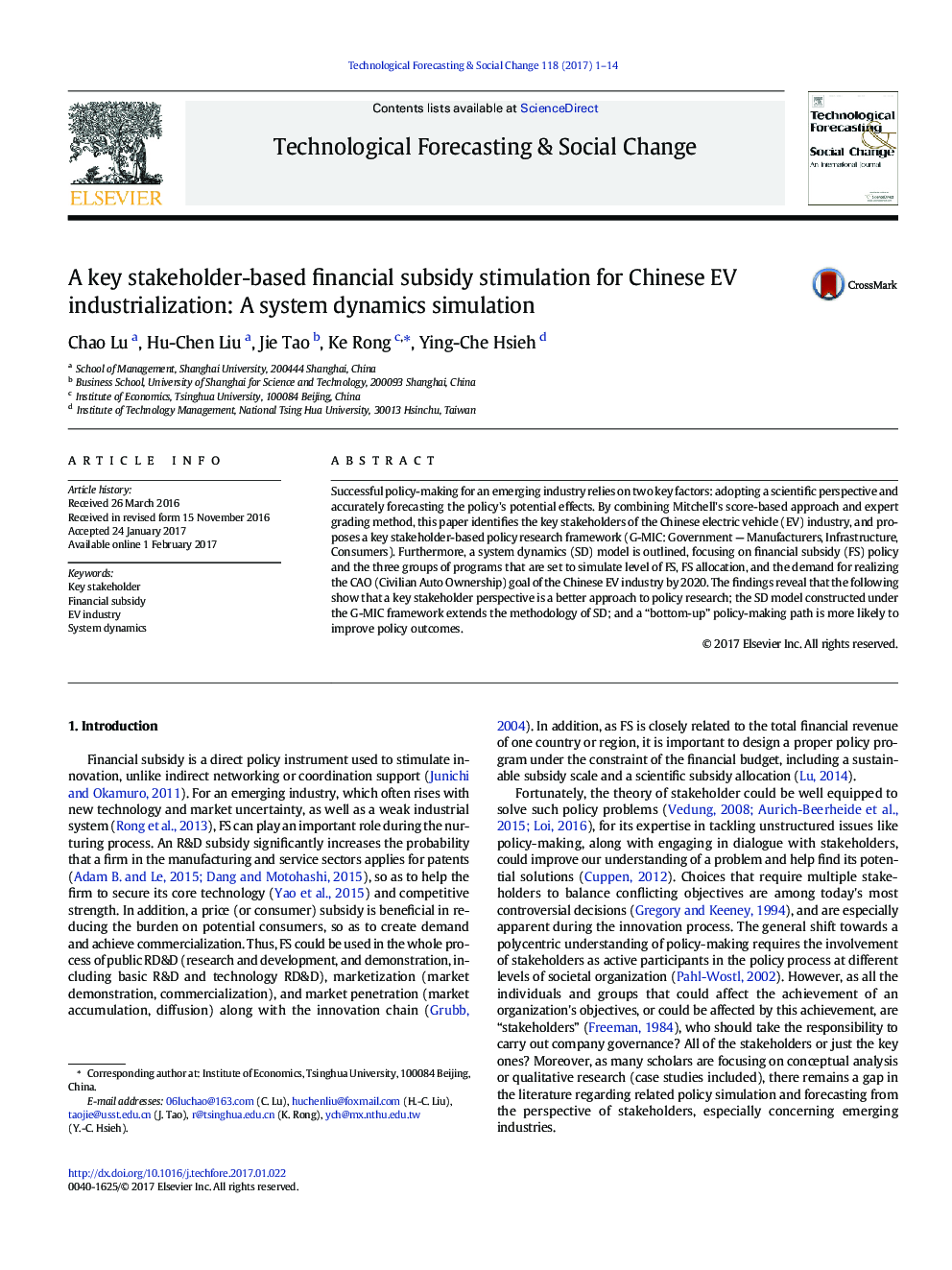| Article ID | Journal | Published Year | Pages | File Type |
|---|---|---|---|---|
| 5037027 | Technological Forecasting and Social Change | 2017 | 14 Pages |
â¢G-MIC framework is proposed from a key stakeholder-based policy perspective.â¢A SD model presents financial subsidy stimulation for Chinese EV Industrialization.â¢A “bottom-up” policy-making path is suggested to improve policy effects.
Successful policy-making for an emerging industry relies on two key factors: adopting a scientific perspective and accurately forecasting the policy's potential effects. By combining Mitchell's score-based approach and expert grading method, this paper identifies the key stakeholders of the Chinese electric vehicle (EV) industry, and proposes a key stakeholder-based policy research framework (G-MIC: Government - Manufacturers, Infrastructure, Consumers). Furthermore, a system dynamics (SD) model is outlined, focusing on financial subsidy (FS) policy and the three groups of programs that are set to simulate level of FS, FS allocation, and the demand for realizing the CAO (Civilian Auto Ownership) goal of the Chinese EV industry by 2020. The findings reveal that the following show that a key stakeholder perspective is a better approach to policy research; the SD model constructed under the G-MIC framework extends the methodology of SD; and a “bottom-up” policy-making path is more likely to improve policy outcomes.
